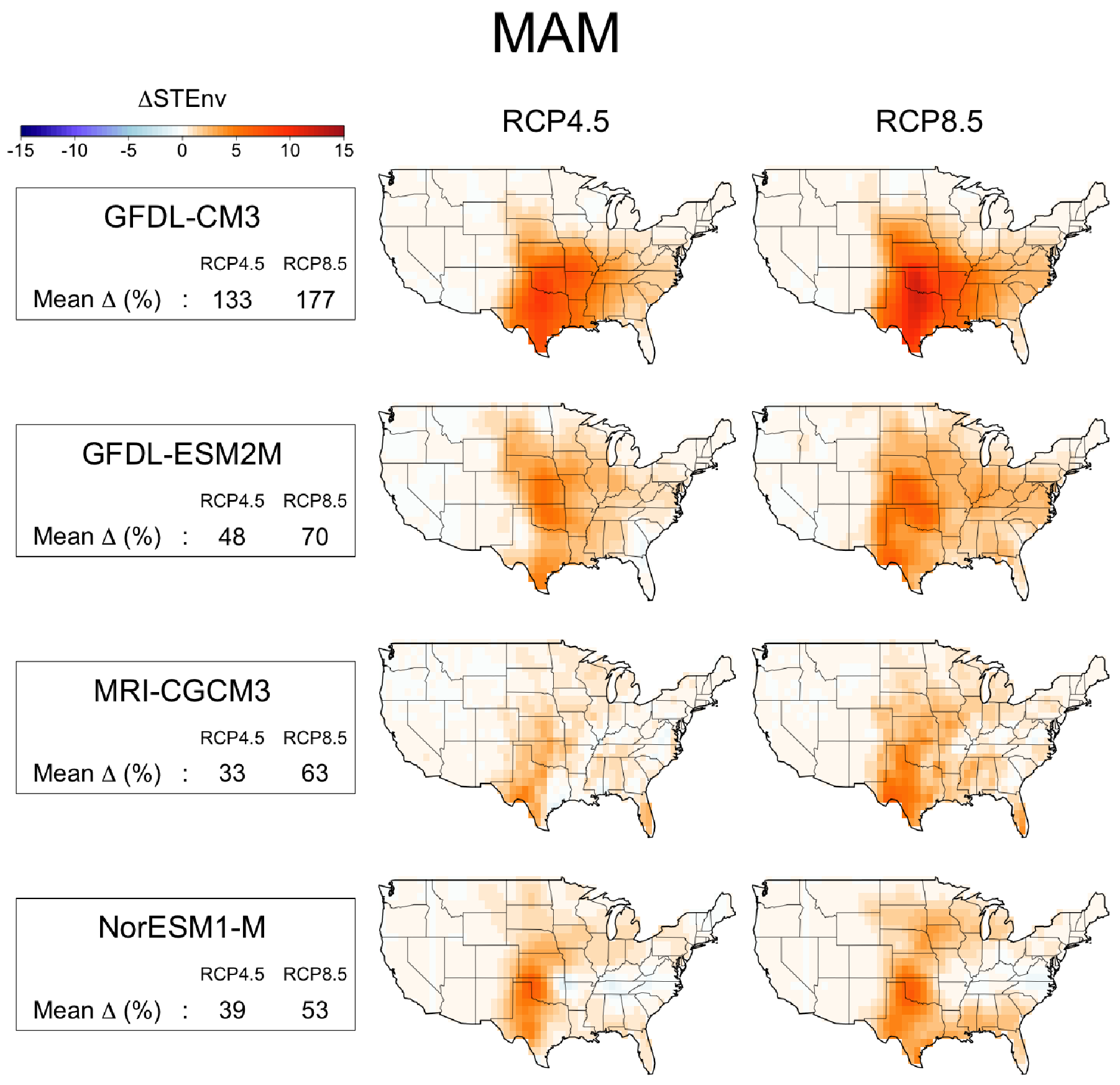Seeley and Romps, The effect of global warming on severe thunderstorms in the United States, J Climate, 2015
Paper
Description
From the top-performing models, the distribution of increases in spring severe-thunderstorm environments in two emissions scenarios (RCP8.5 is business-as-usual).

Will there be more or less severe weather in the United States due to global warming? To answer this question, we need to look at global climate models (GCMs). Unfortunately, the grid spacings in GCMs are still too big to resolve the small-scale motions that comprise a severe thunderstorm. Therefore, we must look at large-scale predictors for severe weather in GCMS; here, we use the same large-scale predictors that weather forecasters use to predict severe weather operationally.
Using this approach, past studies have found that the frequency of severe thunderstorms over the U.S. will increase substantially in the spring, but those studies have found no consensus among models as to changes during summer. Here, we test a hypothesis that the high-performing models -- i.e., those models that do well in matching today's distribution of severe weather -- will be in better agreement about future changes in summertime severe weather. Out of 11 GCMs, we find 4 that perform well in the current climate. Those models are in agreement about the spring, predicting an increase in the frequency of severe weather ranging from 50% to 180% from the year 2000 to the year 2083 in the business-as-usual CO2 emissions scenario. In the summer, the four models give more diverse responses. Three of the models predict large summertime increases in severe weather (a 40% to 120% increase), while one model (NorESM1-M) predicts a significant drying in the middle of the U.S., leading to a 10% decrease in summertime severe weather.